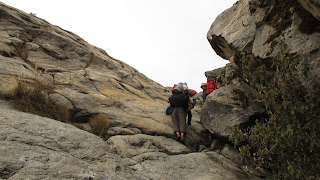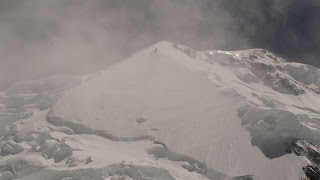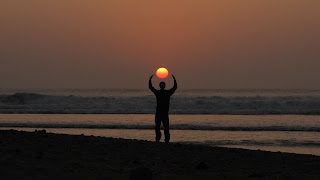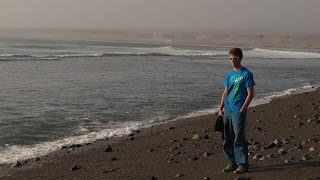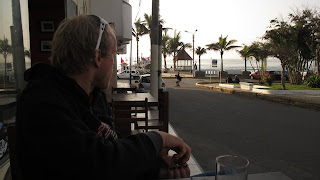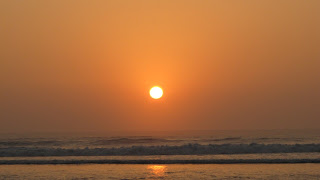Peru 2011
Wednesday, October 19th, 2011
Huaraz-Lima-La Paz – Two days on a bus and the start of the Bolivian Episode
Moving over the Bolivian highland we are soon in La Paz. After two full day and nights by bus we are around our half-way mark in distance of our big journey. It’s been a great time so far with millions of impressions and experiences that have carved themselves in to our memories. While traveling by buss we really get to feel the grandeur of this continent and we are taking in the change of air pressure as we roll up and down the long hills and we can se the change from the landscape of the high sierras of of Ecuador, down to the coastal dry pay-sage around Trujillo up to the subtropics of the Cordillera Blanca. For a day we where just passing the dessert like Peruvian inland before we arrived at the huge lake Titicaca, that are considered one of the the worlds highest lakes, and the border to Bolivia.
Now, while writing this I can se the Cordillera Real on my left in the far distance and I’m really looking forward to arriving in the highest capital in the world in a few hours. Bolivia has been the country I have been looking forward the most of visiting on this trip. It’s just a feeling I have and when I try to come up with arguments in my head to back the statement up, I can not.
But then again, a good feeling is always a good start of something new and both me and Bjarne have lot of things to look forward to in the next few days. Tonight we are going to walk the town to find a good restaurant for dinner, that is usually one of the highlights of the day. Then, tomorrow we are going to find a bus to go south for Nevado Sajama, the highest mountain in Bolivia. The weather was looking good when we last checked two days ago, so i hope the window will still be open. The goal is to climb and ski the mountain before the next low-pressure comes in and then go back to La Paz to spend some time in this seemingly interesting city.
Saturday, October 15th, 2011
Huascarán 6768 m – An alpine style solo ascent on Peru’s highest mountain followed by some fun skiing
How the dreaming started
When I was a kid and went to high school most of my life surrounded skiing. Every time I got to choose a project I tried to angel it in some way towards skiing, mountains, climbing or some kind of physical or physiological subject that would strengthen me for the adventures I saw was forth coming.
I remember so well how I managed to twist one geography project into a work about avalanches. Not that I was particularly interested in the dangers of avalanches back then, it was more that I wanted to find places to dream about go skiing.
I learnt that the deadliest avalanche in the world came down a huge mountain in Peru (Mt Huascaran) in 1970, killing more than 20 000 people and leaving many more homeless. Shocked as I was about the devastating natural forces I still got impressed by mountains so big that they where able to create something like that. If they are that huge they must also be capable of serving great adventures, so thats where the dreaming started.
The old masters
Along the way I also started reading up on the old masters of mountain skiing and i came over this extract written by Parick Vallencant about the first ski descent of Huascaran. Check it out here: pistehors.com/backcountry/wiki/Bio/Patrick-Vallencant (scroll down the page till you get to the Huascarán part)
Huascarán north and south seen from Mucho
The Adventure
With all this in mind we stumbled in to the mountain town of Huaraz a week ago. On our journey through south america this has been planned as a stop and it has been the mountain that has been bugging my mind the most.
First of all we are here on probably the worst time of the year. The normal climbing season of this mountain is between june and august and the autumns are infamous for lots of precipitation, storms and bad weather. Swedish adventurer Fredrik Sträng literarily told me that we are going to get in trouble if we go here at this time when I talked to him this summer. If the weather was not going to take us, it was going to be lots of snow, hard winds, no other people and possible avalanche danger.
Secondly its not that easy of a mountain to get up on. Its the 7th highest mountain in south america and the highest in Peru. Out of the ten highest peaks on the continent this is definitely the one with the hardest normal route and as a bonus its highly crevassed and threatened by seracs a good part of the way. Its also, for the record, the second point furthest from the center of the earth, after Ecuador’s Chimborazo.
I mean, if we would have been here during the normal climbing season with sufficient amount of time I wouldn’t have been to worried. But on our optimistically packed itinerary through the Andes this have definitely been the theoretical crux of the journey.
So it was with great respect and with some anxiousness that I approached the mountain last saturday. The weather forecast told us we would have about three days of bad weather before a possible window of high pressure. That felt perfect as we had understood that the approach was fairly long and we needed time to gradually move up our camps to properly acclimatize and to have a good position when the weather window (hopefully) would come.
We took a local mini bus from Huaraz to Mancos early saturday morning. We got squeezed in the back with our gear and could hardly move during the one hour ride. Once in Mancos we managed to take a taxi up to the little village of Mucho on the foot of the mountain. The driver knew, of course, exactly where to let us of and before we knew it we got fed in someones home while waiting fore mules and porters.
I have never used either mules nor porters before but we knew it would save us a few days worth of energy on the mountain as well as its helping out the locals who can make way over average local income on us gringos.
So of we went up the beaten track towards the Refuge Don Bosco at 4800m. Its an almost 1800m vertical rise from the village and we where really glad we had our two new found local friends and two mules to get our heavy backpacks, food for 7 days and ski equipment anywhere near the start of the fun.
It took us about five hours to get to the refuge. As I said before we where here kind of of season and we read in the guestbook in town that the last climbers who sat their foot on the mountain where there more than two months earlier so of course the refuge was closed.
We slept one night outside of the hut and then we continued on our own up to camp one at just below 5200 m. Everything went well but Bjarne got really worked by the second day. And getting really worked and trying to acclimatize to your new altitude sleeping-record does not go hand in hand so he was feel really bad.
The weather was as promised – low pressure with precipitation but not much wind. On the third day we took a rest day in camp 1 so Bjarne could hopefully recover to move up higher the next day. But as experienced before, if you get worked at altitude and you are not acclimatized to that point, recovery goes dead slow, as does further acclimatization.
So Bjarne was feeling the altitude and was really tired and was only slowly getting better leaving moving up to camp 2 a no option. The weather was slowly getting better and we would have our window soon, but I was by my self from here on. To get Bjarne in shape to move up higher we would first have to get him lower down but we didn’t have enough food and fuel to get him rested and then go up again on this attempt. And we where not able to move up camp; leaving an about 1600 m vertical distance of totally unbroken, snowy and crevassed terrain between me and the summit. A total suicide at first view, but after some consideration a small chance of success and a gift given to me in the shape of an adventure so big that I didn’t know if i would be able to handle it. In other words, I would need to dig deep again.
The snow that had fallen had gotten really warm in the day and then refrozen during night. This would mean the lower part of the face got relatively safe in the night and early morning. On the forth day I took of at three in the morning to scope the route with the help of the full moon. But I had a really bad gut feeling and the clouds came in; darkening the mountain making it almost impossible for me to see where to go in the maze of seracs. I wasn’t at all worried about falling in to something as the snow was rock hard and i where on skis, but it would simply take to long time negotiating the way and at the same time the gut feeling told me something was terribly wrong.
I took my skins of and skied back to the tent and went to sleep. Two hours later we both got waken up by a roar from the mountains. At sunrise when I woke up again I could se the track taken by the debris on the lower parts of the normal route where I would have been if i would have kept going.
This is the game of objective dangers we all play on the mountains where ever we are in the world and what ever kind of objective we have. Some mountains are, of course, more dangerous than others, but still; either if we believe in the religions of statistics or faith its a fact we need to live with. The number one rule is still to always, always listen to your gut feeling. Its a rule that have both theoretical, meta- and quantum-physical as well as logical reasons, more on that later.
Waking up on this, the forth day, for the second time it was to become a great sunny day. I ate my second breakfast and took of again up the mountain. I took my time to scope a good way and I self belayed and tested every snow bridge i didn’t fully trust. It was a huge work to create a “safe” route up the lower 900 m of the mountain. But after a twelve hour work day I had made a route up the lower slopes of the mountain up and around to the col between the north and the south summit. I was totally done physically but it felt like the whole enterprise could be done on a good day. I understood directly though that the normal route was not an option as it was to long and also the upper half was highly crevassed. The strategy had to be changed according to the circumstances but I had high hopes in my new plan.
The fifth day on the mountain I hardly leaved my sleeping bag except for eating and going to the men’s room. I was fully worn out, but I knew from the last springs adventure in Alaska that I have the means to recover in a short period of time. The next night i could hardly sleep, my whole body felt energized and ready to perform and at one thirty I just jumped out of my sleeping bag, ate my porridge and took of in the night.
What had taken so much time two days earlier payed of now. I cruised around the seracs and black holes in the dark and gradually gained altitude. Instead of taking the the normal route up the mountain I had decided to take the most direct line up the classical ice face of The Shield. A 600m ice face (grade D+) that starts half way up the face. Up higher I knew the snow would be getting deep and by climbing an easy ice route I would save lots of energy.
After two hours of climbing i started feeling nauseous and now and then I had to just lie down on my ice axes and force myself to not throw up the energy i would need later on in the day. My stomach started fighting its own little war and two times I had to run in to a crevasse and throw my harness of and take a shit. Fortunately I had taken some toilet paper with me, otherwise it could have gotten nasty.
At dawn i found my self at the start of the shield and I celebrated by opening a can of tuna that would, as it seems, save the day. After eating the fish with my knife I started feeling better and with the sun came the warmth and some new found energy. Happily i started up the face that started up at 60-65 degrees with two short steeper steps. I got really impressed by the americans that claimed to have skied this ten years ago. Then again, much change in ten years on ice faces and at this time i was going to enjoy 600 meters of brittle ice, i was really happy I had ski boots that would relieve the calves. Doing this with climbing boots would have been a nightmare.
I slowly gained altitude and I had to be careful with my placements in the ice that notoriously cracked in big plates and fell down in to the abyss. After what seemed like an eternity I arrived at a small plateau for a short break and gave Bjarne a shout on the radio.
“Good work Andreas, you are about one third of the way up the Shield.”
That was not really what I had hoped to hear after what had felt like such a long time of hard work. But the angel eased up the higher I came and i switched over to my ten-ten method. This means i take ten steps, then lie down on my axes for ten seconds and then repeat this till I get where I want.“Persistence is favorable”, says the old proverb and in the end you get where you want in climbing as long as you persist, even if it may feel like an eternity sometimes.
After some hours I was up on top of the Shield on a sharp ridge that would lead me to the summit plateau.
After some hours I was up on top of the Shield on a sharp ridge that would lead me to the summit plateau.
Now came what would be the next test. Wallowing in knee deep snow that would break down in plates almost broke me down mentally. I took two steps up and sank down one. This is enervating on a mountain near you, but on over 6300 m by myself it took all i had to get up this ridge. Instead of ten-ten i had to do three-twenty at times.
The whispering little voice in the back of my mind armed with negative thoughts got stronger and stronger. The scary feeling of tears loading up in the throat preparing to start crying was building up. I didn’t have much more in me and going beyond where you have been is always scary. Fright implies the unknown. And now what I didn’t know was if I was going to have the strength to get back down again.
After ten hours of climbing I finally arrived at the top plateau. It was midday and it was a stellar day, but the wind was chilly. I had all my clothes on started walking on the flat. It was boot deep snow and it was really hard work. I took a few steps and then lay down on the snow like a wounded animal, got up on my feet – to soon again, fall down on my belly.
Fear filled me with doubt. At least I had really given it a good try, but now its time to turn back. Andreas, you can still be proud of what you have achieved today. You have gone beyond where you have been before. I got tears in my eyes, and it felt like I could touch the summit, but I could not have it. What an internal fight!
After have gotten maybe 50 meters in half an hour I got an idea. I threw of my backpack and put my dromedary bag and some powerbars in my pocket. I ditched everything i didn’t needed on the spot and carried on upwards on my skins. It may seem like an obvious thing to do now, but it felt like breaking a mathematical formula there and then on the mountain in that exhausted state.
It was the classical scandinavian fjeld scenario during the next two hours. I would get close to a small knoll that I would think is the summit and then when I got there there would be another one behind. And when I got to the next one another one would still be there teasing me behind this one.
But in the end there where nothing more behind the last knoll than the view of the Peruvian mountains in the south. When I looked back I could see the classical mountaineering peaks in the north as well as Huascaran Norte. Everything below my feet.
I fell down in to a pile of muscle, bones, clothes and equipment. I didn’t know what I had left. I really didn’t know. I took a few photos with my camera, pulled of the skins from under the skis. Buckled up the boots and started cruising down. It was not a beautiful sight. All my old students from my time as a ski instructor would have smiled at me thinking, Andreas, now you’re not living as you are teaching. But at that moment, I couldn’t have cared less.
I got back to my pack and put it on together with my Go Pro, and then continued down towards the ridge that had been such a hard work. I really didn’t have a good idea how to get down this mountain. I skied a few turns, and then sat down hyperventilating, skied a few turns and then sat down to catch my breath. Skiing was dead easy, like most of the time, it was just the art of breathing that was hard. At least my headache was starting to leave me and it got easier to concentrate. On my right i had a fifty degree slope for two hundred meters of really hard snow. I knew that if i wait half an hour i would tear that one up in big turns when the sun had done its work, but I was to tired to bother – I just wanted down.
I slid down without making turns for 100 m, then thought if looked blue further down, so i changed to crampons walked down 50 m and then realized it was easy skiing. The half hour had passed and made the snow soft. It was such an amateur thing to do, but then again I was tired – like hell.
I took of my jacket and didn’t bother putting the camera back on. I jumped the bergschrund and started to try to find a way down through the seracs with poor Bjarne trying to helping me out from below. Together we actually worked it out and it only took me about fifteen minutes to ski down to my old track and it was really good skiing in a magical steep glacier environment.
I doubt this line have been skied before even though it feels much more natural than the normal route, it gives really good quality skiing and its the easiest and most direct line on the mountain. No down climbing or rappelling needed. Maybe a 5.3, D+ or something like that.
The snow got softer and softer the lower down I got and when I was back on my old tracks I didn’t have to think about much anymore. I cruised the last part on autopilot and crashed down at Bjarne’s feet at the tent. It was with great relief and surprise that I sat down to have dinner with my good friend watching the sunset.
We slept another night in our tent and woke up early the next day to ski down the glacier, and walk down to Mucho. The 2200 vertical meters took us about five and a half hour plus a two hour break at the refuge. Someone had broken in to the hut so the guardians where there cleaning and restoring it when we passed by. They invited us for lunch and we sat down enjoying the great Peruvian hospitality below their crown mountain in the warm spring sun.
Well back in Huaraz we are enjoying rest and good food and are trying to catch up on work. We will stay here for one or two days and then continue south, always south!
For more info on Huascarán, check these links out:
Shitheads:
Andreas: 22
Bjarne: 24
In the bus to Mancos
In Mucho
Our donkey and our horse
Some scrambling
A night outside of the hut
Bjarne Sahlén
Bjarne climbing the slabs
And the glacier
Our camp
Huascarán north and south
The Shield
It was quiet warm in the tent…
Just another self belay
Bjarne working
Breakfast
Our ongoing shithead tournament
The moon at dawn on my summit push
Taking a rest
Climbing
The summit ridge
On the top
Looking south from the top
Looking north from the top
Back down in camp
Bjarne skiing down
In the cab on our way back to Huaraz
In town the same night
Saturday, October 8th, 2011
South towards Peru; surfing in Trujillo and expedition planing in Huaraz
Peluche managing the sun
Today we arrived in Huaraz after a beautiful voyage down the coast by bus. We arrived yesterday morning in Trujillo and had the day to spend before leaving again in the evening for Huaraz.
The choice was easy, we jumped on a taxi down to the coast, hired some boards and went surfing. It was a wonderful day in the ocean followed by great seafood and peruvian ice. Early this morning we arrived in Huaraz and have spent the whole day shopping, sorting out park fees, permits and packing. Now we are set to go up in the mountains again tomorrow. We have food for seven days with us, so you might not hear from us in a while!
Shitheads:
Andreas: 13
Bjarne: 10
Our bunker room in Guayaquil
Another breakfast on the way. We haven’t found good coffee on the whole trip so far
An old Volvo bus got us from Guayaquil to Trujillo
Leaving the pirate town
Happenings on the way…
Our luggage room in Trujillo
This dude knew whats important in life
Bjarne relaxing by the water after a day of surfing
This was not us, but I would say Peluche got pretty close!
Bjarne putting in some working hours on the bus
First glimpse of the Cordillera Blanca
Packing session late at night







